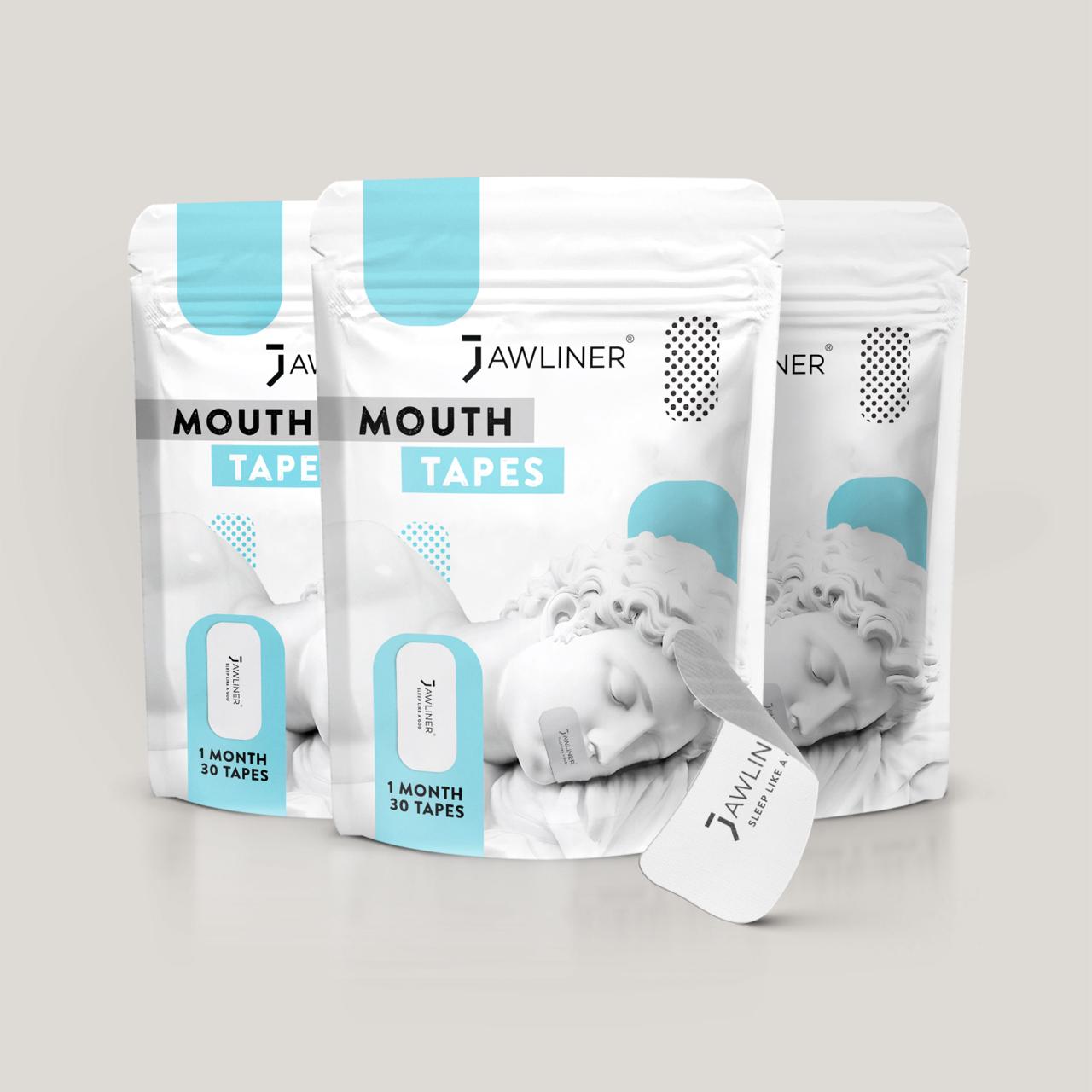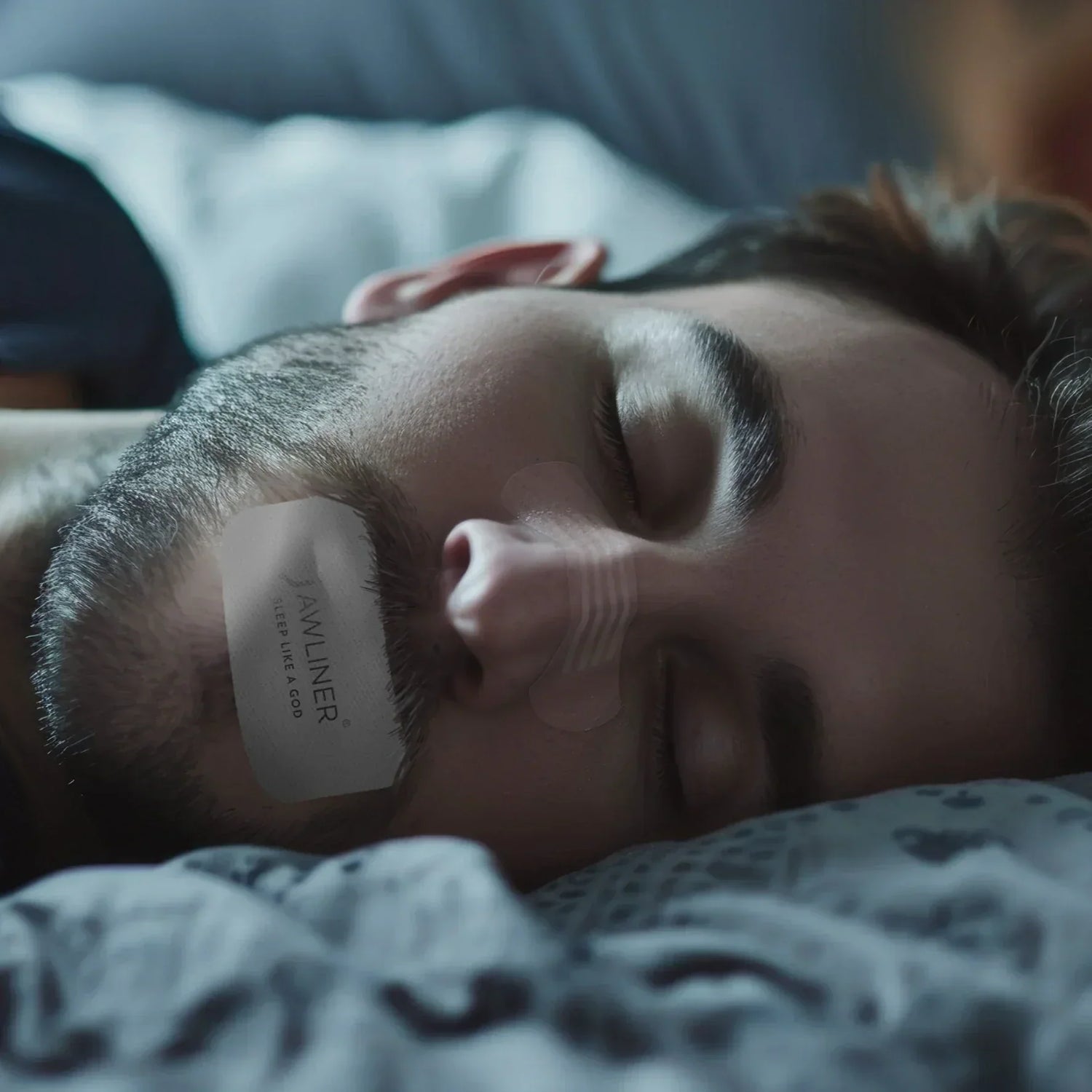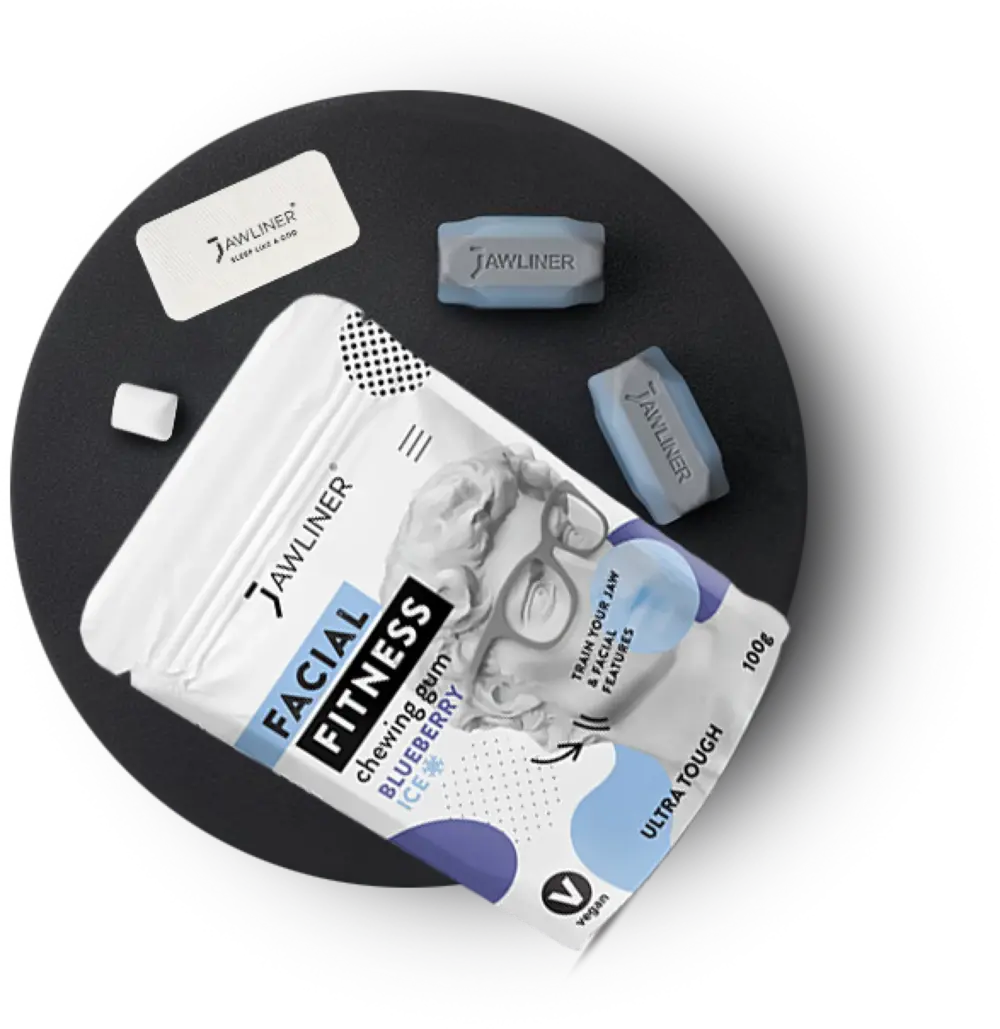Tired of poor sleep and heard about the new trend called Mouth Taping? Taping your mouth shut at night is supposed to promote nasal breathing and improve sleep quality. Celebrities and influencers are doing it – but does it really work? Let’s take a closer look.
So, you want to sleep better using this method? We'll show you everything you need to know about mouth taping, from the health benefits of nasal breathing to potential risks and alternatives.
You'll learn:
- what science says about it,
- the real benefits of nasal breathing,
- and how to apply this method safely.
We clarify for you: Which methods truly support your sleep? And what risks lie behind current trends? What's useful and what’s just hype? We'll show you how to get the most out of your night. Start mindfully and breathe right.
The Essentials at a Glance
- Mouth taping can encourage you to breathe through your nose at night and may positively influence your sleep.
- Nasal breathing filters, humidifies, and warms the air – considered beneficial for your body.
- Mouth taping is best suited for people without major respiratory problems. If you're unsure or suffer from known issues like sleep apnea, consult a doctor first.
Contents:
- 1. Mouth Taping: A New Trend for Better Sleep?
- 1.1 How Does Mouth Taping Actually Work?
- 2. Benefits of Nasal Breathing
- 3. Risks and Side Effects of Mouth Taping
- 4. Scientific Studies on Mouth Taping
- 5. How to Apply Mouth Taping Properly
- 5.1 Why the Right Mouth Tape Makes a Difference
- 6. Alternatives to Mouth Taping
- 7. Mouth Taping and Snoring
- 8. Who Should Avoid Mouth Taping?
- 9. Summary
1. Mouth Taping: A New Trend for Better Sleep?
Mouth taping simply means sealing your mouth with special tape while sleeping. The goal? To promote nasal breathing by blocking mouth breathing. Here's what you should know:
- Celebrities swear by the positive effects on their sleep quality.
- On social media, especially TikTok, the method has gained a massive following.
- Countless people share success stories using this simple technique.
Sounds crazy to tape your mouth if you struggle with snoring or sleep problems? Maybe, but fans report improved well-being and better rest through this simple method. The tape forces your body to breathe through the nose, which is said to bring remarkable benefits.
But what’s the real story? Is mouth taping just another trend or an intriguing way to influence your nightly breathing? To better understand, let’s look at the role of nasal breathing and the potential risks of sealing your mouth.
Current scientific insights on this topic also help evaluate the method more realistically. There are already some initial reports and smaller studies.
1.1 How Does Mouth Taping Actually Work?
If you sleep with your mouth open, your tongue can fall backward into your throat, partially blocking your upper airways. Air then flows in and out through your mouth past the tongue and the soft tissue in your throat. This tissue begins to vibrate – creating the typical snoring sounds.
Mouth taping ensures that your mouth stays gently closed. This helps the tongue remain in its natural forward position and reduces airway obstruction. Air flows through the nose, and the movement of the soft tissues in the throat can be minimized. That’s why many people report less snoring when using mouth taping at night.
2. Benefits of Nasal Breathing
- It filters, warms, and moistens inhaled air, whereas mouth breathing can lead to dryness and an irritated throat.
- There’s evidence that nasal breathing may help regulate blood pressure and heart strain.
- Nasal breathing is also linked to the production of vasopressin, a hormone affecting bladder function during the night – supporting uninterrupted sleep.
- Some reports mention up to 20% higher oxygen uptake through the nose, though exact values vary by situation and measurement methods.
Stress reduction? Nasal breathing is said to calm your nervous system and promote relaxation. Slow, deep breathing through the nose directly affects specific brain regions and may help you wind down. This is confirmed by a recent study in the American Journal of Physiology: Nasal breathing has a direct effect on the central nervous system and can support relaxation via specific brain areas.
Nasal breathing helps by:
- Filtering particles, allergens, and pathogens from the air before they enter the lower airways.
- Keeping mucous membranes moist, protecting airways from dryness.
- Warming and humidifying the air during inhalation – easing strain on the respiratory tract.
Many people say they feel more refreshed and fall asleep more easily with mindful nasal breathing. These positive effects explain why nasal breathing is gaining popularity.
3. Risks and Side Effects of Mouth Taping
Despite the many benefits of nasal breathing and positive testimonials, there are also risks, disadvantages, and side effects associated with mouth taping. Sleep specialists question the effectiveness of this method and emphasize that serious sleep issues should be addressed through professional treatment. A major concern is that mouth taping could worsen an obstructive sleep apnea syndrome. So caution is advised, especially if you already suffer from such sleep disorders.
Psychological effects should also not be underestimated. If you suffer from anxiety disorders or other mental health conditions, taping your mouth can be distressing and anxiety-inducing. Experts advise against using mouth taping as a self-treatment in these cases without medical guidance.
There are no known reports of serious harm from mouth taping. Still, you should be aware of the potential risks and consult a doctor if in doubt. The safety and effectiveness of mouth taping greatly depend on your individual situation and health conditions. That’s why being well-informed and cautious before trying this method is essential.
4. Scientific Studies on Mouth Taping
Scientific research on mouth taping is currently limited and mostly based on small study groups. A comprehensive medical proof of the method’s effectiveness is still lacking.
Some smaller studies suggest that mouth taping can help with mild sleep apnea and reduce snoring. A study from 2022 confirms this: participants with mild obstructive sleep apnea showed significantly improved nighttime breathing (view study).
At the same time, there are signs that mouth taping could be problematic for those with existing obstructive sleep apnea. In such cases, taping the mouth may further strain the airways and worsen symptoms.
So it's clear: Mouth taping is no cure-all. Nevertheless, it has become a popular topic. Many user experiences – boosted by TikTok and celebrity advocates – speak for themselves. Research is catching up and will hopefully soon provide more clarity.
5. How to Apply Mouth Taping Properly
To use mouth taping safely and effectively, you should follow some basic steps:
- Use only hypoallergenic and breathable tape to avoid skin irritation.
- Before applying the tape, make sure your mouth is clean and dry to ensure it sticks well.
- The tape should be applied horizontally across your lips so that they are gently held together.
Ensure the tape has no wrinkles or air bubbles to guarantee proper adhesion. It’s recommended to:
- start with short periods of use during the day
- gradually increase the duration to get used to mouth taping
- test during the day whether the tape is comfortable and tolerable for you.
Proper application is crucial for achieving the desired benefits and minimizing side effects. By following these steps, you can ensure that mouth taping supports restful sleep as effectively as possible. Remember: patience and adjustment are key to getting the most out of this method.
5.1 Why the Right Mouth Tape Makes a Difference
If you want to try mouth taping, it’s not just about technique – quality matters too. This is where the JAWLINER® Mouth Tape comes in. It’s specifically designed for nighttime use and ensures your mouth stays reliably closed without feeling restrictive or disturbing your sleep. The tapes are extra large and can be easily cut to size – ideal for smaller mouths as well.
This breathable patch sticks securely – even if you move a lot during the night or have facial hair. No tugging, no slipping, no waking up with loose tape. Instead, you automatically breathe through your nose and avoid uncomfortable sensations on the skin.
Especially convenient: the JAWLINER® Mouth Tape is perfect for anyone who wakes up with a dry mouth or wants to finally tackle their snoring – without devices, medications, or complex solutions.
If you’re serious about testing whether mouth taping can improve your sleep, it’s worth starting with a product that prioritizes comfort and functionality.

6. Alternatives to Mouth Taping
Aside from mouth taping, there are other methods and tools to support your nasal breathing and reduce snoring.Nasal strips can help open your airways during sleep and support breathing through the nose. Breathing therapy techniques assist in regulating your breath and preventing mouth breathing.
Another option is using a humidifier to moisten your nasal membranes and ease nasal breathing. Additional proven anti-snoring methods include:
- Avoiding sleeping on your back
- Using special pillows
- Using dental splints
- Weight loss
These alternatives offer different ways to improve your sleep quality at night without taping your mouth. Everyone is different, so it’s important to find the method that suits you best before bedtime.

7. Mouth Taping and Snoring
The main goal of mouth taping is to reduce snoring, and there’s a clear physiological reason for this: Sleeping with your mouth open allows the tongue to fall back, partially blocking the upper airways. That’s what causes the typical snoring sounds – due to vibrations of the soft palate and throat tissue during inhalation.
If your mouth stays closed, the tongue remains forward in its natural position. The airways stay open, and air flows freely through the nose – which can reduce snoring. Studies show that for mild forms of sleep apnea, mouth taping can significantly reduce the number of breathing interruptions and the intensity of snoring.
However, be cautious: With more severe obstructive sleep apnea or blocked nasal passages, taping the mouth can have the opposite effect. Listen to your body and discuss concerns with your doctor.
It’s even more effective when combined with simple measures such as:
- Sleeping on your side
- Maintaining a stable weight
- and staying physically active.
8. Who Should Avoid Mouth Taping?
Mouth taping is not suitable for everyone. People who should avoid this method include:
- Individuals with respiratory conditions like asthma or allergies, as breathing may be impaired during sleep.
- Those with severe sleep apnea symptoms.
- People with existing cardiovascular diseases.
It’s also recommended to avoid mouth taping if you have a cold or suffer from nasal congestion. Children and individuals with certain pre-existing conditions should also refrain from using this method.
9. Summary
Mouth taping can be an intriguing method for improving sleep quality and reducing snoring. Advocates claim that promoting nasal breathing offers health benefits that can enhance your well-being both short- and long-term. Still, you should not ignore the potential risks and side effects.
The current scientific research is limited, and further studies are needed to fully assess the safety and effectiveness of mouth taping. Your personal health conditions and preferences play an important role in deciding whether this method is right for you. Ultimately, it’s your choice if you want to give mouth taping a try.
FAQ – Frequently Asked Questions
What is mouth taping and how does it work?
Mouth taping is a technique where you seal your mouth with special tape while sleeping to support nasal breathing and prevent mouth breathing. This can help improve your sleep quality and reduce problems like snoring.
Are there risks and side effects to mouth taping?
Yes, mouth taping carries risks, especially if you have respiratory conditions or sleep apnea. Medical supervision is strongly recommended.
How do I apply mouth taping correctly?
Apply mouth taping using hypoallergenic, breathable tape. Clean your mouth beforehand and place the tape horizontally over your lips. Start with short durations to get used to the method.
Are there alternatives to mouth taping?
Yes, there are several alternatives including nasal strips, breathing therapy techniques, humidifiers, special pillows, and dental splints. These options can also help improve your sleep quality.






